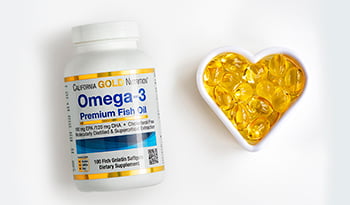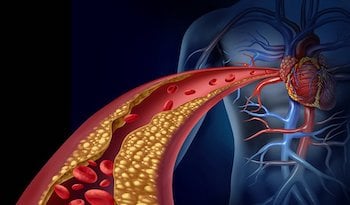심장 건강, 면역력을 증진하는 코큐텐

2022년 4월 업데이트 / 2017년 7월 원글 게시
코큐텐은 에너지를 생성하는 세포소기관인 미토콘드리아의 필수 구성요소입니다. 코큐텐은 신체에서 에너지를 만드는 데 필요한 ATP의 생성에 관여합니다. 코큐텐은 자동차 엔진의 점화 플러그와 유사한 역할을 합니다. 즉, 코큐텐이 '초기 점화'를 해주지 않으면 인체는 제대로 기능할 수 없습니다.
인체는 스스로 코큐텐을 생성할 수 있지만 가끔 코큐텐이 충분하지 만들어지지 못하는 경우가 생기기도 합니다. 심장은 신진대사가 아주 활발하게 일어나는 기관입니다. 따라서 체내에 코큐텐이 부족하면 심장에 심각한 문제가 발생할 수 있습니다. 코큐텐 결핍은 코큐텐 합성을 방해하는 유전적 결함 또는 후천적 영향, 열악한 식단, 체내 요구량 증가로 인해 생길 수 있습니다. 고콜레스테롤혈증, 고혈압을 비롯한 심장 및 혈관 질환은 신체 조직의 코큐텐 요구량을 높일 수 있습니다. 또한 50대 이후로는 나이가 들수록 코큐텐 수치가 감소해 더 많은 코큐텐이 필요할 수 있습니다.
공급원
매일 일상적인 식단을 통해 섭취할 수 있는 코큐텐의 양은 약 3-5mg에 불과해 코큐텐의 혈중 농도와 조직 내 수치를 높이는 데 크게 도움이 되지 않습니다. 코큐텐은 육류, 가금류, 생선 등에 함유되어 있습니다.
효능
코큐텐 보충제는 고콜레스테롤혈증, 고혈압, 울혈성 심부전, 심근병증, 승모판 탈출증, 관상동맥 우회술, 협심증 같은 심혈관 질환을 치료하거나 예방하는 데 주로 사용됩니다. 이러한 용도는 많은 연구에 의해 뒷받침되고 있습니다. 또한 연구에 따르면 코큐텐은 당뇨병, 치주질환, 면역결핍증, 암, 비만, 근이영양증을 치료하는 데도 도움이 됩니다.
단, 8주 이상 매일 코큐텐 보충제를 섭취해야 이러한 질환을 개선하는 효과를 볼 수 있습니다.
심장 기능 개선
코큐텐은 심장 근육의 에너지 생성을 촉진하고 산화를 억제합니다. 코큐텐 결핍은 심장질환 환자에게 흔히 나타납니다. 다양한 심혈관 질환이 있는 환자의 심장 조직에 대한 생체검사를 실시한 결과 50-75%의 환자가 코큐텐이 부족한 것으로 밝혀졌습니다. 코큐텐 결핍을 해소하면 모든 종류의 심장질환을 임상적으로 크게 개선할 수 있는 경우가 많습니다.
혈압 강하
연구에 따르면 고혈압 환자의 39%는 코큐텐이 결핍된 상태입니다. 여러 연구에서 코큐텐 보충제는 고혈압 환자의 혈압을 낮추는 것으로 밝혀졌습니다. 단, 대부분의 경우 보충을 시작한 지 8-10주가 지나야 효과를 볼 수 있었습니다. 고혈압 환자들의 수축기 및 이완기 혈압은 10% 이내로 감소한 경우가 많았습니다.
면역력 증진
면역 기능에 관여하는 조직과 세포는 많은 에너지를 사용하므로 코큐텐이 충분히 공급되어야 제 기능을 발휘할 수 있습니다. 여려 연구에서 코큐텐은 면역력을 향상시키는 효과가 있는 것으로 입증되었습니다. 또한 아드리아마이신(Adriamycin), 아트랄린(Athraline) 같은 심장독성이 있는 화학요법 약물을 투여받은 암 환자는 코큐텐을 섭취하는 것이 좋습니다.
체중 감량
코큐텐은 에너지 생성에 필수적인 보조인자이므로 코큐텐 결핍은 비만의 원인이 될 수 있습니다. 연구에 따르면 비만인 사람의 52%는 코큐텐 수치가 낮은 것으로 나타났습니다. 이들에게 매일 코큐텐 100mg을 투여했을 때 체중이 크게 감소했습니다.
형태
대부분의 코큐텐 제품은 주로 효모 발효 과정을 통해 생산됩니다. 코큐텐은 유비퀴논(Ubiquinone)과 유비퀴놀(Ubiquinol)이라는 형태로 존재하며 두 형태는 상호 전환될 수 있습니다. 유비퀴논과 유비퀴놀은 보충제로 섭취할 수 있으며 체내에 흡수되면 상호 전환이 가능해집니다. 체내 코큐텐의 약 95%는 유비퀴놀 형태로 존재하는데 유비퀴놀이 유비퀴논보다 활성이 더 높습니다. 유비퀴논을 섭취하면 체내에서 유비퀴놀로 쉽게 전환됩니다. 따라서 어느 형태를 사용하든 혈중 유비퀴놀 수치를 높이는 결과를 얻을 수 있습니다. 유비퀴논은 식품과 함께 섭취하면 흡수가 잘되고 오일이 함유된 음식은 유비퀴논의 흡수율을 더욱 높일 수 있습니다.
권장 섭취량
스타틴(Statin) 계열 약물을 복용하고 있거나 항산화제의 일반적인 효능을 누리고자 하는 사람은 어떤 형태로든 매일 코큐텐 100mg을 섭취하면 됩니다. 심장의 스트레스, 노화, 비만, 당뇨로 인해 더 많은 용량이 필요한 이들은 매일 유비퀴논 150-200mg 또는 유비퀴놀 100-150mg을 섭취하십시오. 코큐텐을 음식과 함께 섭취하면 흡수율을 극대화할 수 있습니다.
안전성
코큐텐은 매우 안전합니다. 장기간 사용해도 심각한 부작용이 생긴 경우는 없는 것으로 알려져 있습니다. 하지만 임신 중이거나 수유 중인 경우에는 안전성이 검증된 바가 없기 때문에 코큐텐을 사용하지 않는 것이 좋습니다. 단, 위험을 무시할 수 있을 정도로 예상되는 이점이 아주 크다고 의사가 판단한 경우에는 임산부나 수유모도 코큐텐을 섭취할 수 있습니다.
약물 상호작용
코큐텐이 약물이나 영양소와 부정적인 상호작용을 일으키는 사례는 보고된 바가 없습니다. 하지만 많은 약물은 코큐텐 수치에 부정적인 영향을 미칠 수 있습니다. 한편 코큐텐은 일부 약물의 부작용을 완화하는 것으로 알려져 있습니다. CoQ10 보충제는 아드리아마이신 외에도 특정 콜레스테롤 저하제, 베타 차단제, 향정신성 약물의 부작용을 일부 상쇄하는 것으로 나타났습니다. 로바스타틴[Lovastatin, 메바코(Mevacor)], 프라바스타틴[Pravastatin, 프라바콜(Pravachol)], 아토르바스타틴[Atorvastatin, 리피토르(Lipitor)], 심바스타틴[Simvastatin, 조코(Zocor)]은 간에서 콜레스테롤을 생성할 때 필요한 HMG-CoA 환원효소를 억제해 혈중 콜레스테롤 수치를 낮추는 데 사용됩니다. 하지만 이러한 약물은 코큐텐을 비롯해 신체 기능에 필요한 다른 물질의 생성도 막는 단점이 있습니다. 이런 약제를 사용하는 동안 신체 조직의 코큐텐이 고갈되는 것을 방지하려면 매일 코큐텐 50mg을 보충해야 합니다.
참고문헌:
- Schandalik R, Gatti G, and Perucca E: Pharmacokinetics of silybin in bile following administration of silipide and silymarin in cholecystectomy patients. Arzneim Forsch 1992;42(7):964-8.
- Barzaghi N, et al.: Pharmacokinetic studies on IdB 1016, a silybin-phosphatidylcholine complex, in healthy human subjects. Eur J Drug Metab Pharmacokinet 1990;15(4):333-8.
- Mascarella S, et al.:Therapeutic and antilipoperoxidant effects of silybin-phosphatidylcholine complex in chronic liver disease: Preliminary results. Curr Ther Res 1993;53(1):98-102.
- Vailati A, et al.: Randomized open study of the dose-effect relationship of a short course of IdB 1016 in patients with viral or alcoholic hepatitis. Fitoterapia 1993;44(3):219-28.
- Marena C and Lampertico P: Preliminary clinical development of Silipide: A new complex of silybin in toxic liver disorders. Planta Medical 1991;57(S2):A124-5.
- Facino RM, et al.: Free radicals scavenging action and anti-enzyme activities of procyanidines from Vitis vinifera. A mechanism for their capillary protective action. Arzneim Forsch 1994;44:592-601.
- Schwitters B and Masquelier J: OPC in Practice: Biflavanols and Their Application. Alfa Omega, Rome, Italy, 1993.
- Corbe C, Boisin JP and Siou A: Light vision and chorioretinal circulation. Study of the effect of procyanidolic oligomers (Endotelon). J Fr Ophtalmol 1988;11:453-60.
- Boissin JP, Corbe C and Siou A: Chorioretinal circulation and dazzling: use of procyanidol oligomers. Bull Soc Ophtalmol Fr 1988;88:173-4,177-9.
- Weihmayr T and Ernst E.Therapeutic effectiveness of Crataegus. Fortschr Med 1996;114:27–9.
- Schmidt U, et al.: Efficacy of the Hawthorn (Crataegus) preparation LI 132 in 78 patients with chronic congestive heart failure defined as NYHA functional class II. Phytomed 1994;1(1):17–24.
- Schussler M, Holzl J, Fricke U: Myocardial effects of flavonoids from Crataegus species. Arzneim Forsch 1995;45:842-5.
- Hertog MG, et al: Dietary antioxidant flavonoids and risk of coronary heart disease: the Zutphen Elderly Study. Lancet 1993;342:1007-11.
- Wegrowski J, Robert Am and Moczar M:The effect of procyanidolic oligomers on the composition of normal and hypercholesterolemic rabbit aortas. Biochem Pharmacol 1984;33:3491-7.
- Wilkinson EG, et al.: Bioenergetics in clinical medicine. VI. Adjunctive treatment of periodontal disease with coenzyme Q10. Res Commun Chem Pathol Pharmacol 1976;14:715-9.
- Hanioka T, et al.: Effect of topical application of coenzyme Q10 on adult periodontitis. Mol Aspects Med 1994;15(Suppl):S241-8.
- Folkers K, et al.: Increase in levels of IgG in serum of patients treated with coenzyme Q10. Res Comm Pathol Pharmacol 1982;38:335-8.
- Lockwood K, Moesgaard S, Folkers K. Partial and complete regression of breast cancer in patients in relation to dosage of coenzyme Q10. Biochem Biophys Res Comm 1994;199:1504-8.
- Lockwood K, Moesgaard S,Yamamoto T, Folkers K. Progress on therapy of breast cancer with vitamin Q10 and the regression of metastases. Biochem Biophys Res Comm 1995;212:172-7.
- Iarussi D, et al.: Protective effect of coenzyme Q10 on anthracyclines cardiotoxicity: control study in children with acute lymphoblastic leukemia and non-Hodgkin lymphoma. Mol Aspects Med 1994;15(Suppl.):s207-12.
- van Gaal L, de Leeuw ID, Vadhanavikit S, and Folkers K: Exploratory study of coenzyme Q10 in obesity. In: Folkers K,Yamamura Y, eds: Biomedical and Clinical Aspects of Coenzyme Q, Vol 4. Elsevier Science Publ, Amsterdam,1984. pp369-73.
- Weiss M, et al.: Bioavailability of four oral coenzyme Q10 formulations in healthy volunteers. Molec Aspects Med 1994;15:273-80.
- Chopra RK, et al.: Relative bioavailability of coenzyme Q10 formulations in human subjects. Internat J Vit Nutr Res 1998;68:109-13.
- Malqvist ML, et al.: Bioavailability of two different formulations of coenzyme Q10 in healthy subjects. Asia Pacific J Clin Nutr 1998;7:37-40.
- Zhang Y,Turunen M, and Appelkvist EL: Restricted uptake of dietary coenzyme Q is in contrast to the unrestricted uptake of alpha-tocopherol into rat organs and cells. J Nutr 1996;126:2089-97.
- Ibrahim WH, et al.: Dietary coenzyme Q10 and vitamin E alter the status of these compounds in rat tissues and mitochondria. J Nutr 2000;130:2343-8.
- Kaikkonen J, et al.: Antioxidative efficacy of parallel and combinedsupplementation with coenzyme Q10 and d-alpha-tocopherol in mild lyhypercholesterolemic subjects: a randomized placebo-controlled clinicalstudy Free Radic Res 2000;33:329-40.
- Bargossi AM, et al.: Exogenous CoQ10 supplementation prevents plasma ubiquinone reduction induced by HMG-CoA reductase inhibitors. Mol Aspects Med 1994;15(Suppl.):s207-12.
면책사항:웰니스 허브의 취지는 의학적인 진단이나 치료를 제공하는 것이 아닙니다.

















































































 목차
목차















